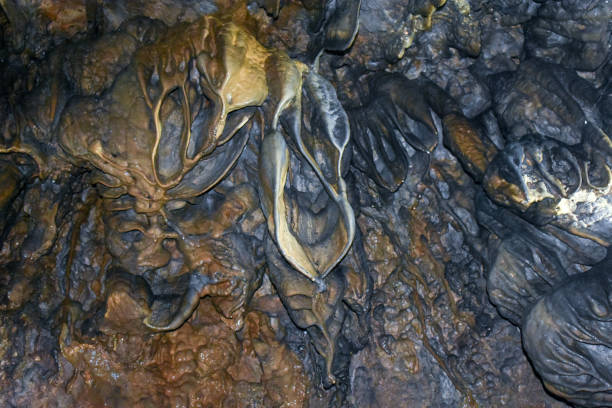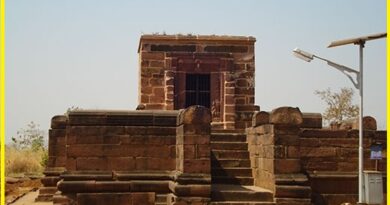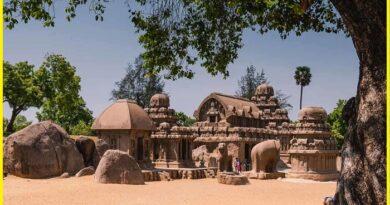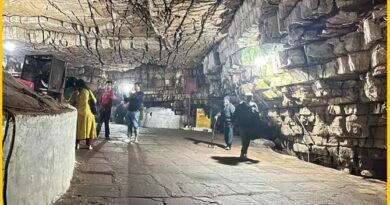Nature’s Masterpiece-The Magnificence of Mawsmai Cave
Mawsmai Cave
Mawsmai Cave is a popular limestone cave located near Cherrapunji (also known as Sohra), in the Indian state of Meghalaya. It is one of the major tourist attractions in the region, drawing visitors from all around the world. The cave is formed out of limestone and is well-known for its intricate patterns of stalactites and stalagmites. These formations, created by the slow deposition of minerals over thousands of years, give the cave its unique and mesmerizing appearance.
Visitors to Mawsmai Cave Cherrapunji can explore its winding passages and chambers, marveling at the natural beauty of the formations illuminated by artificial lighting installed within the cave. The cave is relatively easy to navigate and is not too strenuous for most visitors.
Due to its accessibility and stunning geological features, Mawsmai Cave Cherrapunji is a must-visit destination for travelers exploring the northeastern state of Meghalaya, known for its lush green landscapes, waterfalls, and unique natural formations.
Mawsmai Cave Geology
Mawsmai Cave, like many caves in the region, is formed from limestone. The geology of Mawsmai Cave is a result of a combination of chemical and physical processes acting over millions of years. The cave is primarily composed of limestone, which is a sedimentary rock formed from the accumulation of calcium carbonate (CaCO3) sediment over time. This sediment is often derived from the remains of marine organisms such as coral, shellfish, and marine plankton.
Also, read- A Hidden Secret-Garden of Caves and Laitmawsiang in Meghalaya
Karst Landscape- The formation of Mawsmai Cave is closely tied to the karst landscape of the region. Karst landscapes are characterized by soluble rocks such as limestone, which are susceptible to dissolution by acidic groundwater. Over time, the limestone bedrock is dissolved by weakly acidic rainwater, creating cavities and passages underground. In this process of chemical weathering, particularly carbonation, plays a significant role in the formation of caves in limestone terrain. Rainwater, which absorbs carbon dioxide from the atmosphere as well as from decaying organic matter in the soil, becomes weakly acidic. As this acidic water percolates through cracks and joints in the limestone, it gradually dissolves the rock, enlarging fractures and forming passages.

Stalactites and Stalagmites-Inside Mawsmai Cave, visitors can observe various formations such as stalactites, stalagmites, columns, and flowstones. These formations are created by the deposition of dissolved minerals, primarily calcium carbonate, as water drips from the cave ceiling and flows along the cave floor. Over time, these mineral deposits build-up, forming the characteristic features that adorn the cave walls and floor.
Mawsmai Cave Length-The length of Mawsmai Cave is approximately 150 meters. It is one of the most accessible caves in the region and offers visitors the opportunity to explore its intricate limestone formations and natural beauty within a relatively short distance.
Mawsmai Cave History
The history of Mawsmai Cave, like many natural formations, is primarily geological, spanning millions of years. The local indigenous communities of the Khasi Hills, where Mawsmai Cave is located, have likely been aware of the cave for centuries. They may have utilized it for shelter or as part of their cultural and spiritual practices. While local inhabitants might have known about the cave for generations, it gained wider recognition during the colonial era when British explorers and geologists began documenting the natural wonders of the region.
With the growth of tourism in Meghalaya, particularly in places like Cherrapunji and its surroundings, Mawsmai Cave emerged as a popular destination for travelers. Infrastructure development, including pathways, lighting, and safety measures, likely began to accommodate visitors and enhance their experience of the cave. In recent decades, there has been an increasing emphasis on the conservation of natural landmarks like Mawsmai Cave. Efforts have been made to preserve the cave’s delicate formations and ecosystem while still allowing for sustainable tourism.
Beyond its geological and touristic importance, Mawsmai holds cultural significance for the local Khasi people and contributes to the region’s cultural heritage. Stories, myths, and traditions may be associated with the cave, passed down through generations.
How To Reach Mawsmai
The nearest major airport to Cherrapunji is in Guwahati, which is approximately 150 kilometers away. From Guwahati Airport, you can hire a taxi or take a bus to reach Cherrapunji. Cherrapunji is accessible by road from various cities in Meghalaya and neighboring states. You can either drive to Cherrapunji or take a bus from cities like Shillong, the capital of Meghalaya, or Guwahati. The road journey offers scenic views of the lush green landscapes of Meghalaya.

Some travelers also prefer to explore the area around Cherrapunji on foot. There might be trekking trails leading to the Cave or other nearby attractions. However, it’s advisable to inquire locally about the trekking routes and conditions before setting out. Many tour operators in Meghalaya organize guided tours to Cherrapunji and its surrounding attractions, including Mawsmai Cave. Joining a guided tour can be a convenient way to explore the area while learning about its history, culture, and natural features.
Shillong to Mawsmai Cave Distance
The distance from Shillong, the capital of Meghalaya, to Mawsmai near Cherrapunji is approximately 53 kilometers by road. The journey usually takes around 1.5 to 2 hours by car, depending on road conditions and traffic. It’s important to note that travel times may vary due to factors such as weather and road conditions in the region.



